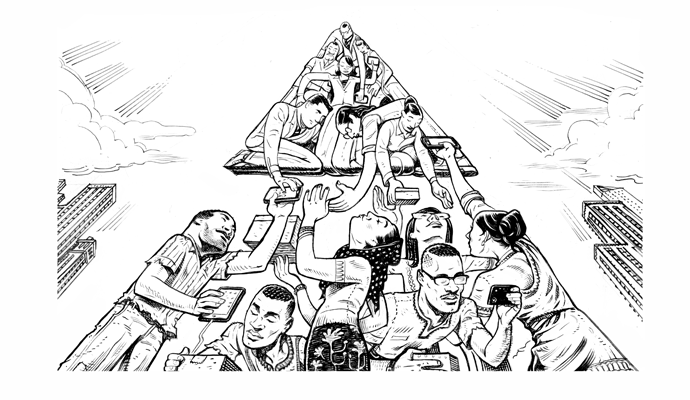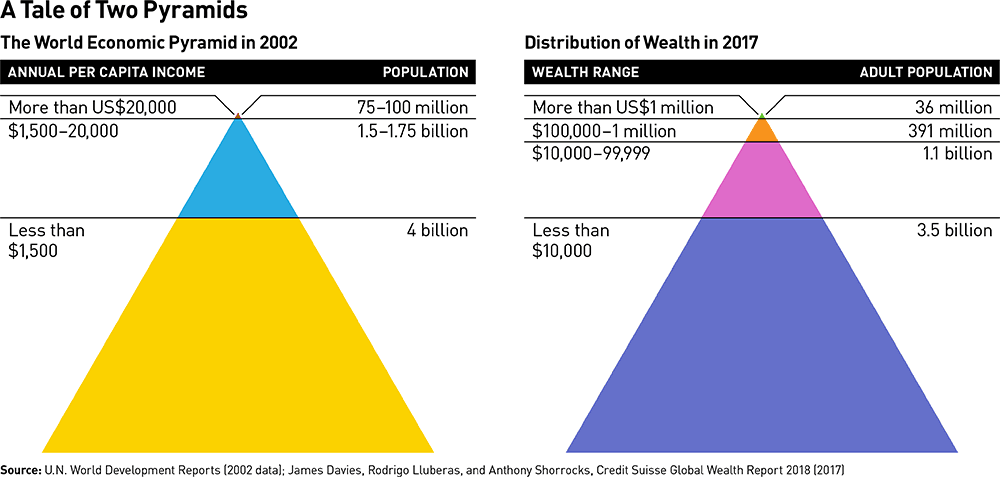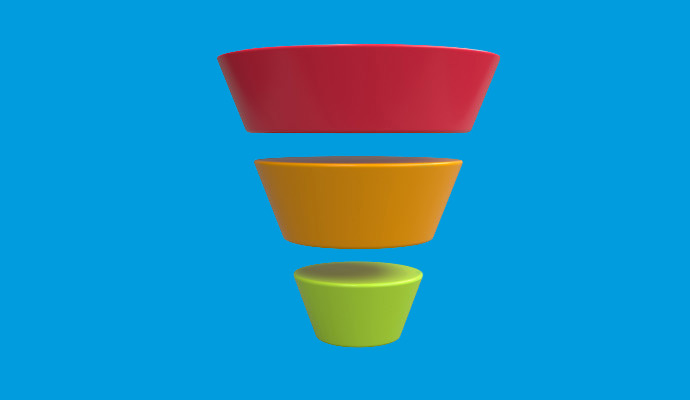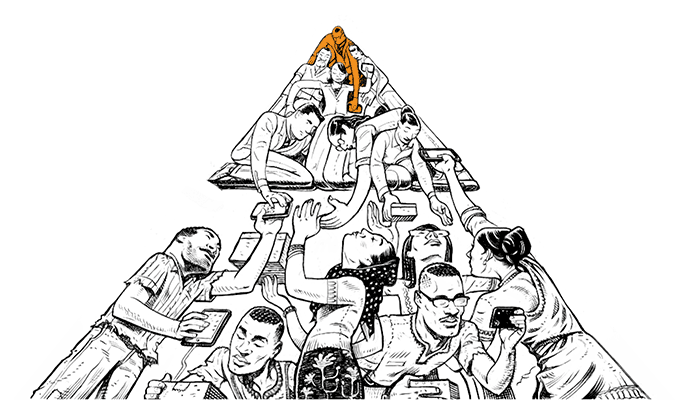The new fortune at the bottom of the pyramid
Profound changes are closing the gap between the world’s poorest consumers and others, offering an unprecedented opportunity for businesses to create — and share in — prosperity. For more insight, see “Changes to the Fortune at the Bottom of the Pyramid.”
A version of this article appeared in the Spring 2019 issue of strategy+business.
Almost 20 years ago in a strategy+business article, my father, C.K. Prahalad, and his colleague Stuart L. Hart debuted a simple but radical idea. They argued that the 4 billion poor people around the world represented a vibrant consumer market, that this market could best be tapped with for-profit models, and that the poor themselves had to be partners in the process. This challenged many long-held assumptions about the role of both government and business in addressing poverty. At the time, their thinking (which had been rejected for four years by scholarly journals) invited polite skepticism at best. Much of the hesitation to engage with their ideas stemmed from a belief that uplifting the poor was the domain of government and nonprofits, or was simply too risky. Most businesses lacked the insight and cost structures to reach poor consumers. There was a persistent belief that needs such as shelter and nutrition had to be addressed before the poor could understand — and pay for — aspirational products and technology. Sadly, this pessimism was as common among elites in emerging markets as it was in the West.
Nevertheless, the idea of merging profit and purpose at what my father and Hart termed the bottom of the pyramid, and which many now refer to as the base of the pyramid, captured the imagination of both corporations and the development community. What began in strategy+business as a blueprint for what was possible grew into two editions of a book, The Fortune at the Bottom of the Pyramid, authored by my father, profiling companies and social-sector organizations that had created successful business initiatives in developing economies. And unlike many management ideas that have come and gone, the concept of the bottom of the pyramid continues to inspire vibrant conversation today. I think the reason is that it speaks to the aspirations of managers and consumers alike. It represents a fundamentally optimistic view about the ability of the poor and people inside organizations to collaborate and make the world a better place.
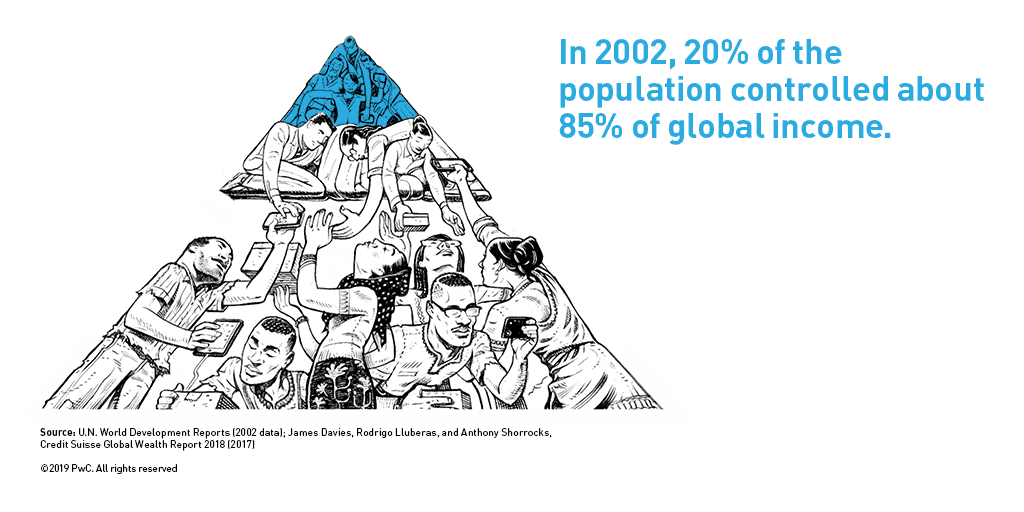
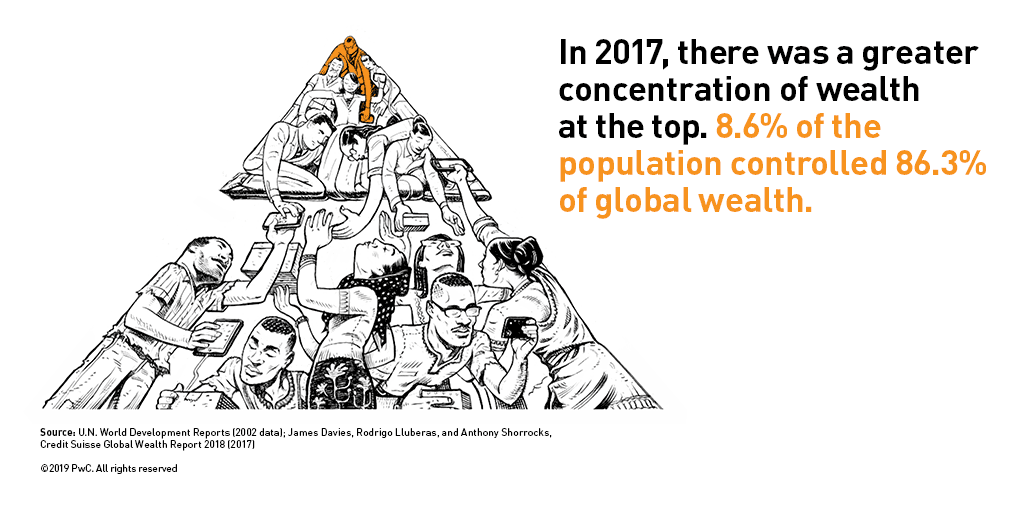
By now, the idea of business as a force for good has taken hold, and the discussion around poverty has changed, too. Since my father’s passing in 2010, I’ve revisited many of the organizations and people he profiled in his book. I’ve advised entrepreneurs, served on nonprofits, and worked on bottom-of-the-pyramid innovation. It’s clear to me that three fundamental shifts are affecting the world’s poor and their role as consumers:
• Most important, a dramatic reduction in extreme poverty around the world has created opportunities for entrepreneurial solutions to many social problems and narrowed the gap between developed and bottom-of-the-pyramid markets.
• Technology — including the widespread use of cell phones among the world’s poor — is significantly lowering the cost of communication and learning. This is enabling companies to develop, deliver, and scale many important services, such as bank payments to mobile phones.
• Not only are industry and civil society ready to accept the narrative of innovation as the antidote to poverty, but there’s a rising expectation that businesses should try to make the world a better place.
The solutions to today’s pressing social problems cannot be decided by debate; they must be discovered through experimentation. The opportunity is huge: Companies are now in a great position to improve life for the world’s poor while also improving their bottom line.
Rapid Change Means Goals Are Changing, Too
The World Bank estimates that since 1990, 1.1 billion people have moved out of extreme poverty. One major reason is that the United Nations Development Programme’s Sustainable Development Goals have offered many stakeholders in the poverty problem the strategic clarity they need to successfully collaborate in bringing about change. Data from the International Monetary Fund shows that the fastest-growing economies in the world are in emerging markets. This powerful combination of reform and rapid economic growth is on display in countries such as India, where the World Data Lab’s World Poverty Clock shows that about 40 people per minute overcome extreme poverty. The transition is in progress in many parts of Africa too (although there is tremendous variation in poverty rates on the continent), with Chinese investment leading economic growth. The idea of the world’s poor as active consumers is no longer dubious. They are now purchasing a range of goods and services, including consumer products and cell phone plans.
Because of this overall reduction in extreme poverty, the conversation about the bottom of the pyramid has shifted from how to alleviate poverty to how to address deep inequality — and not just in developing countries. A comparison of the world economic pyramid from my father’s original paper with 2017’s numbers tells an interesting story (see “A Tale of Two Pyramids”). In 2017 there were fewer people at the bottom of the pyramid (3.5 billion, compared with 4 billion in 2002). Income tiers had also risen so significantly by 2017 that it’s now difficult to directly compare them on the two charts. In 2000, the richest 20 percent of the world’s population accounted for about 85 percent of global income. By 2017, there was a new concentration of wealth at the top. The Credit Suisse Global Wealth Report (pdf) for that year showed that approximately 86.3 percent of global wealth was controlled by 8.6 percent of the population. Oxfam reports that 42 individuals now possess the same cumulative wealth as the bottom 3.6 billion people on the planet. Poverty has decreased and access to technology has accelerated, but the once widely held idea that the income pyramid would transform into a diamond, with wealth concentration in the middle, has not yet become a reality.
Nevertheless, there has been significant progress at the bottom, and both multinational corporations and local innovators have driven it. The original strategy+business article cited “information poverty” as a major roadblock to development and pointed out that “half of humanity has yet to make a single phone call.” That claim no longer holds, as local companies — Kenya’s Safaricom, India’s Reliance, China’s Alibaba, and many others — have grown in size and sophistication, in both product and service offerings, giving rise to more entrepreneurial cultures and making technology accessible to the world’s poor. In some cases, the technology is even more accessible than low-priced products. For example, in 2009, India’s Tata released the Nano, dubbed the “world’s cheapest car,” at a price point of US$2,500. But the way the car was marketed hindered its appeal among its intended consumers, and Tata halted production in 2017. Meanwhile, ride-sharing apps such as Uber and Indian local alternative Ola have enjoyed brisk growth, and Ola is now expanding overseas. Everyone can both use these platforms and find work on them, and in the future, some of these services may help fulfill last-mile delivery challenges, too. And companies such as Amazon, which is training many small vendors around the world to scale up and become credible brands in their own right, are also helping to propel growth.
Access to technology enables growth for consumers and businesses. And these days, the fortunes of many tech companies rely heavily on their performance in bottom-of-the-pyramid markets. China’s Xiaomi, for example, sold 100,000 phones in less than 10 seconds on India’s e-commerce platform several years ago and is the world’s fifth-largest cell phone maker, despite having no sales in the U.S. to date. (Apple is the only Western company in the top five.) India’s Reliance launched the 4G Jio network, which has 215 million subscribers and is spurring e-commerce growth in the country. And Warren Buffett made his first investment in India in August 2018, taking a stake in One97 Communications, which owns payments firm Paytm.
The evolution of technology has dramatically affected life at the bottom of the pyramid — and created new opportunities. The poor all over the world now have cell phones. Companies no longer have to guess about the preferences and opinions of the bottom of the pyramid when they innovate — they can ask directly. Big data and a payments infrastructure exist for consumers at all income levels.
The statistics, though, can never adequately capture the palpable changes on the ground or give a complete sense of the new dynamics at work. Kenya, for example, had a per capita income of only $1,507 in 2017, according to the World Bank. Yet Kenya’s 10 most valuable brands include Safaricom (telecom), M-Pesa (money transfer), local radio and TV outlets, Facebook, and banking and power companies, many of which serve consumers across income categories. The traditional view of needs explains very little of what is being adopted and purchased at scale in emerging markets. The picture in most countries mirrors this trend — purchases among the poor are a reflection of aspiration rather than pure need. Savvy companies and social innovators today often leverage this phenomenon.
Bottom of the Pyramid Converging with Other Tiers
The original bottom-of-the-pyramid vision suggested that companies that innovated successfully for the poorest markets might be able to attract consumers in developed countries too. Since then, the gap between these markets has narrowed, which means companies of all sizes should be able to capture both types of consumer by considering their common wants in five specific areas:
Companies with a higher purpose. Business leaders today face pressure to deliver profits while also contributing to society. Changing consumer attitudes show that people like companies that engage on social issues. And many employees, especially millennials, want to work at firms that use innovation as a force for good in the world. It is increasingly common for leaders to articulate a vision of how their companies can contribute to a higher purpose. Larry Fink of BlackRock used his 2018 annual letter to CEOs to call for companies in the portfolio to directly contribute to the community. India’s Mukesh Ambani, chairman and managing director of Reliance, drew public support for the company’s 4G Jio network by declaring “digital life will no longer be the privilege of the affluent few.” Given all this support for purpose-driven businesses, it might be less risky than it once was to make big bets in unfamiliar territory.
Trust and community before transactions. Trust is a central precursor to scale. For example, creating opportunities for consumers to sample products and enlisting local salespeople has been critical to the success of the personal care, snack, and detergent businesses. Many companies have invested heavily in product development, but fall short on customer service. Increased competition, which puts pressure on companies to provide better customer service, and new platforms for feedback, delivery, and co-creation, which help companies understand what customers want, can help address this gap and establish and maintain trust.
Design for a fraction of the cost. Big data allows businesses to draw on insights and come up with products and services at radically reduced price points. Rather than relying on limited samples or anecdotal evidence, companies can track actual purchase behavior and transactions to get a sense of the design elements and attributes that consumers value. Companies around the world can already access new markets through platforms such as Amazon. And a new Target line of 70 essentials and personal-care items, dubbed Smartly, is at an attractive price point for global markets (with most items costing less than $2). The line can challenge established brands in the U.S. and appeals to consumers in many different markets. New feature phones from Reliance are available in India for the equivalent of $20. In addition, new ways of consuming, especially shared ownership, are allowing people to access previously unattainable goods and experiences.
A blend of luxury and economy. If you look at a list of the top 100 global brands today, both the luxury and mass-market sectors are well represented. Tech companies, which attract consumers across a wide range of incomes, are exceptions. However, many of the companies in emerging markets have never had the freedom to serve just one sector or the other. A volatile world will require companies to create products and services that appeal to customers across a much wider swath of income levels. Tata, for example, has credibility in the luxury category and in the middle- and bottom-of-the-pyramid markets. Its brand requires design with similar standards — albeit different aesthetics — across all consumer categories.
Creation of social codes and norms. The role of business in helping to establish social codes and norms is at the heart of its power to transform society. Regardless of a person’s income or profession, daily survival requires a series of transactions — through cash, barter, or credit. The way those transactions are constructed affects how easily people are able to transition between professions, locations, and lifestyles. The need to be heard and respected is universal, and the engagement of firms is helping make this happen for a much larger community than ever before. For example, because many roads in Kenya don't have names and buildings lack numbers, even receiving a piece of mail was a stressful and onerous process for many people until MPost allowed people to use their mobile number as a postal address.
It finally feels as though the debate about how to create social impact is getting louder than the debate about whether business has an obligation to do so.
As the definition of a decent standard of living continues to advance, businesses and governments are trying to figure out how to manage what I deem “the good bad news.” For example, the World Health Organization reports (pdf) that non-communicable diseases, such as diabetes, now account for 80 percent of deaths in emerging countries. This figure indicates that economic growth has brought progress in some areas, including infectious disease, maternal health, and life expectancy, all driven by economic growth. But this change also imposes tremendous strain on societies now forced to cope with hunger and diabetes at the same time. This is a pattern that is global in nature — progress, even as it creates benefits in certain areas, creates new pressures and problems in other areas. Sustainability challenges will require businesses to balance new customers’ aspirations to consume with environmental concerns. Rich and poor countries will be grappling with similar problems — but the potential is great for good solutions to scale.
Reflections on the Journey
Long before it coalesced into a framework, aspects of the bottom-of-the-pyramid story were a part of my life and dinner table conversation. Seeing the way it has evolved over the years has taught me that even if life isn’t fair, companies and individuals can strive to make it more so. For me, the impact of this idea is measured in moments. It’s in the interactions I have today, some of which were unthinkable when I was a child.
Ice cream was once taxed as a luxury in India. When I had it, it truly felt like a guilty pleasure because it was out of reach for so many. My father challenged local entrepreneurs to create an ice cream that everyone could enjoy. Today, there is a popular ice cream bar that retails for Rs 7 (about 10 cents), and now when I’m in India, I see day laborers in line alongside me to buy treats for their children. Some aspects of my identity, such as my American accent, no longer create a barrier, but open a conversation instead. A store clerk once noticed my accent and asked me to read out a list of words so he could record it and share it with his accent correction class. When I asked him what he wanted to do with that training, he patiently explained that he planned to work in customer service for a few years, and perhaps start his own business someday. In my interactions with people traditionally at the bottom of the pyramid, I’ve slowly been able to move beyond empathy to engagement and friendship. My WhatsApp contacts list now includes tailors, forest rangers, and drivers — many of the people I could only smile at politely in years past. Today, we share family photos, jokes, and ideas.
But that is only half of the story. Back at home in the U.S. and in management forums, the conversation has changed, too. It finally feels as though the debate about how to create social impact is getting louder than the debate about whether business has an obligation to do so. My excitement about the bottom of the pyramid is no longer rooted in its promise. It is continuously renewed in conversations with entrepreneurs and in seeing the actual ventures the bottom-of-the-pyramid idea has inspired. It’s in realizing that skepticism has given way to thoughtful questions. Mainstream business magazines now profile multinational corporations that are striving to win over rural consumers. There is competition among investors and fear of missing out on the growth opportunities in emerging markets. My LinkedIn invitations have multiplied over the years, too, largely with the addition of people with business ideas that serve — or at least seek to include — consumers at the bottom of the pyramid. The people who were once dismissed are being studied and discussed, and slowly being brought into the conversation. Local innovators are finally getting the recognition they deserve. Most important, the conversation about how to uplift the disenfranchised and address inequality in rich countries is now part of the public discourse.
There is still a long way to go, and the answers to many pressing social questions remain elusive. I believe the impact of the bottom-of-the-pyramid idea was that it injected both pragmatism and optimism into the debate, thereby helping to direct the innovative capacity of business in places where it was needed the most. As business leaders grapple with daunting challenges, they can and should continue to engage directly on social issues with faith that their efforts can make a difference — because they already have. Business has already made the world a better place by creating shared experiences and aspirations. The challenge ahead will be in unleashing innovation to create shared prosperity.
Author profile:
- Deepa Prahalad is a speaker, design strategist, and expert on innovation in emerging markets. She coauthored, with Ravi Sawney, Predictable Magic: Unleash the Power of Design Strategy to Transform Your Business and she consults for corporate clients and startups. Prahalad mentors leading social entrepreneurs and serves on several international nonprofit boards.


